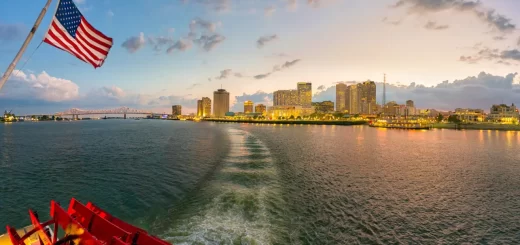Ancient Greece: Akrotiri a Bronze Age city preserved in volcanic ash

From a walkway covered to protect them, a young boy views 3,600-year-old ruins at Akrotiri, preserved for millennia by ash from the volcano which destroyed the city on today’s Greek island of Santorini. (Janet Podolak)
A thousand years before the Parthenon, before the great pyramids of Egypt or Stonehenge in today’s England, there was Akrotiri, a city on today’s Santorini that was buried in ash from a volcano 3,600 years ago.
That volcano, said to be the largest in human history, forever altered the island and triggered a tsunami that traveled south to Cyprus, wiping out the Minoan civilization there. Word of that cataclysmic event is believed by many to have inspired Plato’s story of the lost Atlantis more than a thousand years later.
Excavations of ancient Akrotiri, which dates from the Bronze Age, reveal a sophistication and prosperity of an elaborate drainage system, beautiful wall paintings and multistory buildings perfectly preserved almost 2,000 years before Pompeii. Back then, it was one of the most important ports on the Aegean Sea.
I visited Akrotiri for two hours on a shore excursion from the Celebrity Apex, carefully planned for first thing in the morning before the heat set in. Ramps wind around to allow visitors to see the ruins without disturbing them.
Its original name is lost in time, but Akrotiri was rediscovered in the late 1800s, when pumice from that ancient volcano was being mined to build the Suez Canal in Egypt. Pumice, it seems, makes a waterproof cement needed for such an undertaking. Archaeological excavations were begun in the 1960s and continue today.

Jugs, some still containing traces of oil and barley once stored in them, have been excavated from the ancient ruins at Akrotiri, which was destroyed by what is believed to be the largest volcano known to man. (Janet Podolak)
Akrotiri was named after the nearest town on the Greek island of Santorini, which in recent decades has become one of the most visited of all the Greek islands. Less than 10 percent of the ancient site has been excavated to date as archaeologists continue to carefully examine what’s been left behind from nearly 4,000 years ago.
Unlike Pompeii, which also met its end by a volcano in 49 A.D., no human or animal remains have been uncovered in Akrotiri, prompting the belief that earthquakes caused its residents to evacuate before the largest volcano in human history erupted in 1646 B.C., destroying and transforming much of the island then called Thera.
Akrotiri, believed to cover at least 50 acres, was a large and prosperous port in its time as a crossroads between the Greek mainland of Athens and Egypt. The entire island remained unoccupied for a thousand years after the cataclysm.
Many of today’s visitors to Santorini come to see the 8-by-5-mile caldera blasted out by the ancient volcano, where today’s cruise ships anchor.
Santorini’s most recent destructive earthquakes were in the mid-1950s, and it’s believed both earthquakes and volcanic activity are due again.
Today, the huge caldera has been filled by the blue Aegean sea with a pair of still-steaming volcanic islands in the middle. Cliffs soar nearly 1,000 feet up to villages that are reached by footpath, donkey and a cable car.

This fresco of a boy with fish, pictured in a guide to Santorini, is among those excavated from the ruins at Akrotiri and now in the National Archaeological Museum in Athens. (Janet Podolak)
Akrotiri, on the flatter, eastern side of the island, now is covered with a canopy of wood and steel to protect ongoing discoveries — as well as visitors and archaeologists from the harsh island sun. Many of its exquisite frescoes have been relocated to the National Archaeological Museum in Athens, but artifacts remaining still reveal much about the lives lived here more than 3,000 years ago.
The site is vast, with passageways between two- and three-story buildings, where ancient window and door frames still are intact. Perfectly preserved by the ash in which they were buried for millennia, large jars still containing olive oil and barley can still be seen. Most visits are about three hours, but much more time can be spent by those who are interested.
Admission is about $10, and a certificate showing full COVID-19 vaccination must be presented before entry. Many signs explaining the ruins are in English.
Get more information at Archeology Travel




Recent Comments